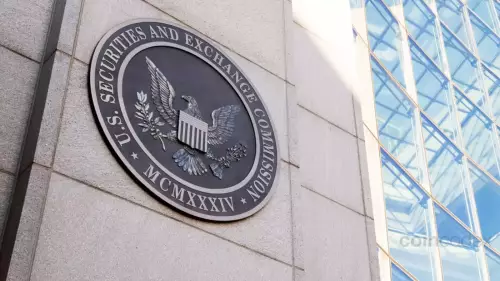 |
|
 |
|
 |
|
 |
|
 |
|
 |
|
 |
|
 |
|
 |
|
 |
|
 |
|
 |
|
 |
|
 |
|
 |
|

Stablecoins have become an essential component of the cryptocurrency ecosystem, providing stability amidst volatility. Among the most prominent stablecoins are USDT (Tether) and USDC (USD Coin), which are designed to maintain a close value to the U.S. dollar. While both stablecoins share similarities, they also possess distinct features and have encountered unique challenges throughout their journeys.
What Are Stablecoins?
Stablecoins are a category of digital assets that aim to remain stable in value over time. They are typically pegged to stable reserves, such as traditional fiat currencies (e.g., U.S. dollar, euro, yen), or commodities (e.g., gold). The goal of stablecoins is to provide the technological benefits of cryptocurrencies, such as rapid global transactions, borderless access, and transparency, without the extreme price volatility that characterizes assets like Bitcoin or Ethereum.
By offering a stable medium of exchange, stablecoins help bridge the gap between traditional finance and the digital economy. They are used by traders to quickly move funds between different cryptocurrencies without converting to fiat, minimizing exposure to sudden market swings. Businesses and individuals can use stablecoins for payments, remittances, and even payroll, taking advantage of faster settlement times and lower fees compared to traditional banking systems.
In decentralized finance (DeFi), stablecoins serve as a fundamental building block, enabling lending, borrowing, and yield-generating activities with reduced risk. As blockchain technology continues to grow, stablecoins play an increasingly important role in supporting a more accessible and efficient financial ecosystem.
Overview of USDT (Tether)
Launched in 2014 by Tether Limited, USDT is the first and most widely adopted stablecoin in the cryptocurrency market. It operates across multiple blockchain networks, including Ethereum, Tron, EOS, Algorand, and others, offering users flexibility and fast transaction capabilities. With a market capitalization of approximately $150 billion, USDT dominates stablecoin trading volumes and serves as a crucial liquidity source across centralized and decentralized exchanges worldwide.
Traders and businesses rely heavily on USDT to move funds quickly without the risks associated with price volatility in traditional cryptocurrencies. The company behind USDT, Tether Limited, operates under the umbrella of iFinex Inc., the same parent company that owns the Bitfinex exchange. Paolo Ardoino currently serves as the CEO of both Tether and Bitfinex, a role he assumed in 2023 after several years as Chief Technology Officer (CTO).
Ardoino has positioned Tether not just as a stablecoin provider but also as a significant player in the broader crypto infrastructure ecosystem. Tether often emphasizes its commitment to transparency, although the company has faced ongoing scrutiny from regulators and media regarding its reserve practices.
USDT claims to maintain its value through full backing by reserves. These reserves historically included a mixture of assets such as U.S. Treasury bills, commercial paper, secured loans, corporate bonds, and even precious metals. However, due to regulatory pressure and public demand for greater transparency, Tether has shifted its reserve composition heavily toward more conservative holdings, primarily short-term U.S. Treasury bills and cash equivalents.
Tether publishes regular reserve reports, although these are attestations rather than full audits, which leaves some questions open regarding the granularity of the reserve breakdown. Despite past controversies, USDT remains a cornerstone of the global crypto economy, providing users with a simple, liquid, and stable digital dollar alternative.
Overview of USDC (USD Coin)
Introduced in 2018, USD Coin (USDC) is one of the leading stablecoins for users who prioritize transparency, regulatory assurance, and maximum safety. The stablecoin is issued by the Centre Consortium, a partnership initially founded by Circle and Coinbase, two of the most recognized names in the American fintech and cryptocurrency industries.
Like USDT, USDC operates on multiple blockchains, including Ethereum, Solana, Algorand, Stellar, and others, ensuring wide accessibility and fast transaction capabilities across different platforms. With a market capitalization of around $30 billion, USDC has positioned itself as the stablecoin of choice for institutions, DeFi applications, and users focused on compliance and security.
Circle, the principal issuer of USDC, has made regulatory compliance and transparency central to its business model. As a registered money services business (MSB) in the U.S., Circle is subject to ongoing oversight by financial regulators.
Recently, USDC became one of the first stablecoins to fully comply with the European Union’s Markets in Crypto-Assets (MiCA) regulation, further highlighting its commitment to a global and sustainable operating model.
In a joint venture with Coinbase, Circle created Centre to provide open-source governance for USDC and ensure the highest standards of transparency.
The stablecoin is backed 1:1 with U.S. dollar-denominated reserves held in a dedicated bank account and managed by an independent accounting firm. These reserves consist almost entirely of short-term U.S. Treasury bills and cash, offering users maximum confidence that
免責聲明:info@kdj.com
所提供的資訊並非交易建議。 kDJ.com對任何基於本文提供的資訊進行的投資不承擔任何責任。加密貨幣波動性較大,建議您充分研究後謹慎投資!
如果您認為本網站使用的內容侵犯了您的版權,請立即聯絡我們(info@kdj.com),我們將及時刪除。
-

-

-

-

- 比特幣,加密和智商:當天才遇到數字黃金時?
- 2025-09-30 23:17:30
- 當Binance調整保證金交易和炒作面對投資者退出時,高級智商個人大膽的比特幣舉動引發了辯論。這對加密貨幣的未來意味著什麼?
-

- Stablecoins,美國創新和錢包代幣:下一個邊界
- 2025-09-30 23:15:03
- 探索美國創新和諸如$ best的錢包令牌越來越受歡迎的美國的穩定幣的興起。
-

- 烏克蘭的NBU,硬幣和加密貨幣:紐約人
- 2025-09-30 23:14:07
- 探索有關烏克蘭加密貨幣場景,NBU的紀念硬幣和模因硬幣的興起的最新信息。這是一次瘋狂的旅程,所以搭扣了!
-

-

-































































